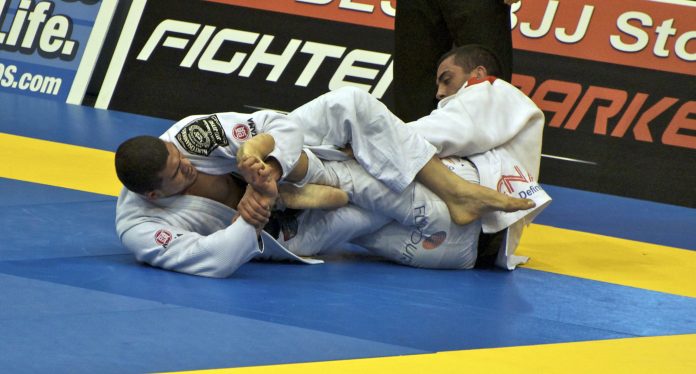
The day of hunting a leg lock submission a blitz move is over. Now, you can base your whole grappling gameplan around leg locks, and be on the hunt from the first moments of a match. Even before you engage with an opponent, you could be setting yourself up for leg lock submissions. The best thing about leg locks today is that they’re a part of a system. In truth, everyone that’s a fan of leg lock submissions has their own little system. Some depend on rule sets, other on preferences and some people like to do everything leg lock related. Whatever the case, as with any other system, not everything can work together. Combining some submissions just doesn’t make sense and is nothing more than a waste of time.
Some leg lock submissions, however, work better as a pair, than by themselves. It is always good to have multiple threats from a single position, especially ones that include more than one limb. With the toe hold and kneebar, you get just such a relationship. Both leg locks work at the highest level of the sport, both in Gi and No-Gi. They’re also legal across all competition formats, albeit somewhere form brown belt upward. Using the combination of a kneebar and a toe hold in a successful system is actually a great gameplan. This leg locks submissions work together so well that you can get them from standing, bottom or top position.
Chaining Leg Lock Submissions
Submission Chains are nothing new in Jiu-Jitsu. They’re actually a sign of a high level of understanding of technique, timing, and control. However, despite all the information available, leg locks are still rarely used in combination with anything. Instead of using them as a passing or sweeping aid, or as combination attacks with other submissions, most grapplers still see leg lock submission as one-off moves.
The first thing to consider with leg lock submission chains is the position. Are leg lock attacks going to provide better control or a pathway to an improved position? Today’s approach, heavily influenced by leg lockers like Eddie Cummings, is all about positional dominance from the so-called Ashi Garami, or leg entanglement positions. Still, once you are in such a position, the ultimate goal is to submit the opponent. Further positional movements should only be considered if they defend well.
In order to deal with the defensive game of an opponent, you do not have to think about switching positions right away. You should instead look to switch to a different submission from the same position. Some leg lock submissions, like the toe hold and the kneebar work perfectly together. They are effective both as direct attacks, as well as feeding off each other and the opponent’s reactions. If you know how to utilize them correctly, you’ll be able to construct an “infinity loop” where you can change from one to the other until you get the tap.
Kneebar Mechanics
Before looking to combine leg lock submissions, we need to understand how each move works. For that, we’ll start by looking at the kneebar submission. However, since this article is about combining submissions, we’re not going to go too deep into the execution of kneebars.
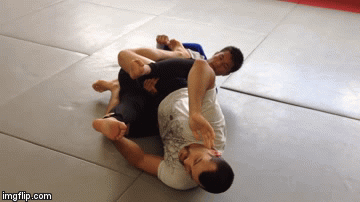
Toe Hold Mechanics
The toe hold is a completely different submission than the kneebar. A toe hold targets the ankle joint, in particular, the ligaments on the outer side of the ankle. It is a very painful submission, but you need to be in perfect position to get a tap from it.
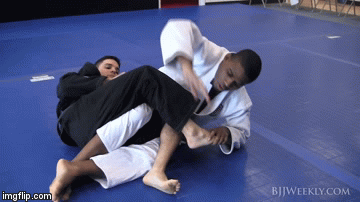

The Kneebar-Toe Hold Relationship
What connects both leg lock submissions into a system is the position for executing both. the best way to obtain both a kneebar and a toe hold is from the reverse Ashi Garami. In order to get to a finishing position, you’ll need to have one shoulder on the mats.
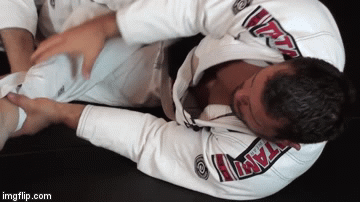
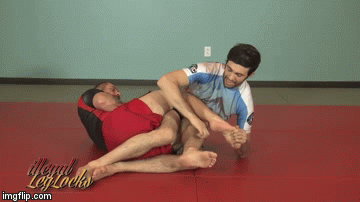


![Darce Choke Encyclopedia – Origins, Mechanics and Variations [2025] BJJ, choke, Brabo, BJJ Darce Choke, D'arce Choke, Darce BJJ Choke](https://bjj-world.com/wp-content/uploads/2017/11/JungPoirierLeeYahoo-218x150.jpg)














![Jeff Glover DVD Bundle Review: Chokin’ Around With Uncle Jeff [2024] Jeff Glover DVD Bundle Review: Chokin' Around With Uncle Jeff](https://bjj-world.com/wp-content/uploads/2024/10/jeff-glover-dvd-bundle-review-chokin-around-100x70.png)
![Finish on the Back Ethan Crelinsten DVD Review [2024] Finish on the Back Ethan Crelinsten DVD Review](https://bjj-world.com/wp-content/uploads/2024/10/finish-on-the-back-ethan-crelinsten-dvd-review-100x70.png)

![Dubious De La Riva Dominique Bell DVD Review [2024] Dubious De La Riva Dominique Bell DVD Review](https://bjj-world.com/wp-content/uploads/2024/10/dubious-de-la-riva-dominique-bell-dvd-review-100x70.png)



![Roger Gracie Closed Guard System DVD Review [2025] Roger Gracie Closed Guard System DVD Review](https://bjj-world.com/wp-content/uploads/2025/01/roger-gracie-closed-guard-system-dvd-review-100x70.png)

![Modern Split Squat Passing Jason Rau DVD Review [2024] Modern Split Squat Passing Jason Rau DVD Review](https://bjj-world.com/wp-content/uploads/2024/11/modern-split-squat-passing-jason-rau-dvd-review-100x70.png)
![Wrestling For Jiu-Jitsu Shawn Williams DVD Review [2025] Wrestling For Jiu-Jitsu Shawn Williams DVD Review](https://bjj-world.com/wp-content/uploads/2025/01/wrestling-for-jiu-jitsu-shawn-williams-dvd-review-100x70.png)

![Best Marcelo Garcia Techniques by Team Marcelo Garcia DVD Review [2025] Best Marcelo Garcia Techniques by Team Marcelo Garcia DVD Review](https://bjj-world.com/wp-content/uploads/2025/02/best-marcelo-garcia-techniques-dvd-review-100x70.png)


![The Bear Trap Nicolas Renier DVD Review [2025] The Bear Trap Nicolas Renier DVD Review](https://bjj-world.com/wp-content/uploads/2025/01/the-bear-trap-nicolas-renier-dvd-review-100x70.png)

![Countering with Crab Ride Anthony Budion DVD Review [2025] Countering with Crab Ride Anthony Budion DVD Review](https://bjj-world.com/wp-content/uploads/2025/03/countering-with-crab-ride-anthony-budion-dvd-review-100x70.png)


![Jeff Glover Deep Half Revolution DVD Bundle Review [2024] Jeff Glover Deep Half Revolution DVD Bundle Review](https://bjj-world.com/wp-content/uploads/2024/10/jeff-glover-deep-half-revolution-dvd-bundle-review-100x70.png)
![Reverse Arm Bar System Andrew Kerfoot DVD Review [2024] Reverse Arm Bar System Andrew Kerfoot DVD Review](https://bjj-world.com/wp-content/uploads/2024/10/reverse-arm-bar-system-andrew-kerfoot-dvd-review-100x70.png)


![Two Sides One Game Sweep and Pass Marcos Tinoco DVD Review [2024] Two Sides One Game Sweep and Pass Marcos Tinoco DVD Review](https://bjj-world.com/wp-content/uploads/2024/11/sweep-and-pass-marcos-tinoco-dvd-review-100x70.png)

